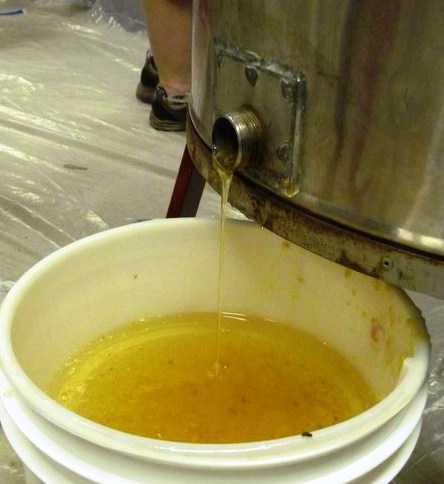hon•ey
noun
: a thick, sweet substance made by bees
—used to address someone you love
: something that is very good
Sweet, viscous liquid food, golden in color, produced by bees from the nectar of flowers.
Whether searching for a natural sweetener or an alternative medicine, local raw honey is a wondrous product. It takes 1600 foraging trips or 55,000 miles, the equivalent of 1.5 orbits around the earth, flown by bees to make 1 pound of honey. Each female worker bee produces about 1/12th of a teaspoon of honey in her lifetime.
Unlike grocery store honey, local raw honey has never been pasteurized or filtered, only strained of wax flakes and bottled, preserving all the naturally occurring pollen and enzymes. Local honey reflects the floral source from which the bees collected nectar. Nectar from spring flowers such as holly ripens to a light-tasting almost clear honey. The same hive may produce a dark molasses-like honey from knotweed flowers in the fall. Local beekeepers appreciate the different honeys and offer them unblended to consumers.
Local raw honey is available seasonally and many beekeepers sell out rapidly; the demand for local honey far exceeds the supply. The following is a list of local beekeepers, sorted by city, with the hive products they offer for sale:
Almost all honey crystallizes naturally over time based on the ratio of glucose to fructose in the ripened honey; the time to crystallize varies depending on the floral source and is not an indicator of honey quality. There are several methods to re-liquefy honey but the most important consideration is to treat honey gently. Heating honey above100° F alters the flavor; above 120°F, the beneficial enzymes are lost.
- Water Bath – Heat water to about 105°F and remove from heat. Remove the top from the honey container and partially submerge the container in the hot water. This is best done with glass containers because plastic may float and tip over in the water. Stir the honey occasionally to help with the reliquifying. The process may have to be repeated several times but it is gentle and most likely to preserve the enzymes in raw honey.
- Microwave – Transfer the honey to a glass container; most plastic honey containers do not withstand microwaving. Start off with a low setting, such as the defrost setting, at 30-second intervals to keep the honey from exceeding 115°F. Remove and stir the honey often to avoid burning. Once most of the honey is mostly liquefied, discontinue heating and stir vigorously to finish dissolving the last crystals.
- Solar Heating – This is a hands-off approach to reliquefying honey. Any enclosed area which experiences a dramatic temperature increase from solar gain will work to liquefy honey. The dashboard of a vehicle is a good example: Place the container of honey into a catch basin to contain any overflow and position it on the dashboard on a sunny day. The honey will reliquefy within a few hours.
To learn more about the properties of honey and find original recipes incorporating honey into cooking, skin care and cough suppressants, visit the National Honey Board.
